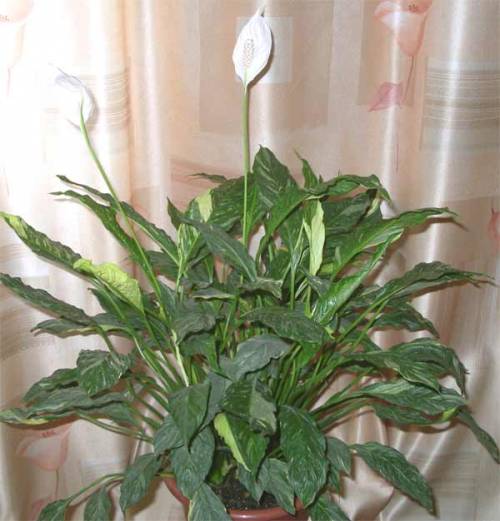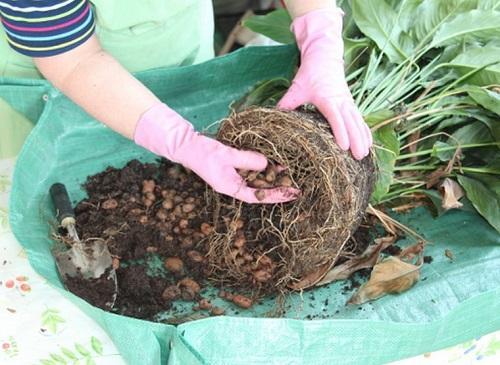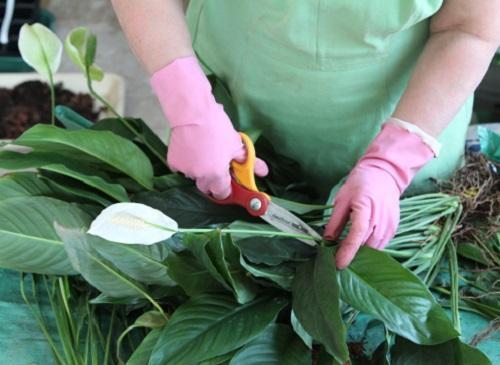How to plant spathiphyllum?
Spathiphyllum or flower female happiness - not a very capricious flower, and does not require much attention to itself. In order for it to have a lush cap of shiny green leaves and to please with its flowering, it is necessary to maintain comfortable conditions for development. Constantly observing the plant, it is important to plant the spathiphyllum on time, and when it is better to do this, the flower itself will tell you.
Signals about the need for a spathiphyllum transplant

An adult spathiphyllum needs a transplant about once every three to four years. You can understand that this time has come by the following signs:
- the plant does not bloom for a long time;
- leaves lose their usual size and shrink;
- roots begin to protrude from the soil in the pot;
- the rosette of the flower is loose;
- the lower leaves inside the bush dry out completely.
If the leaves only dry at the tips, this indicates dry indoor air. In this case, there is no need to transplant the plant, it is enough to rearrange the pot and humidify the air.
Preparing the soil and pot for planting spathiphyllum
For transplanting spathiphyllum, ready-made soil is purchased at a flower shop. A substrate for flowering plants or a universal soil for aroid plants is suitable. Add a little sand to the purchased mixture.
Light loose soil can be prepared by yourself by mixing for this:
- two parts of sod land;
- one piece of leafy land;
- one piece of sand;
- one piece peat.
To improve air permeability, add tree bark or coconut fiber, and to fertilize the soil - a little superphosphate.
The new pot for transplanting a flower should be 3 cm larger in diameter than the one in which the spathiphyllum grew earlier. In this case, a wide pot is more suitable than a tall one.
You should not take a pot that is too large, otherwise the spathiphyllum will direct all its power to the development of the root system, and will not bloom until the roots completely fill the pot.
Preparing spathiphyllum for transplant

Before removing the bush from the pot, it should be well watered so that the plant is easier to reach. Then carefully pull out spathiphyllum and pick out old soil and drainage from the roots.

Use sharp scissors to cut off peduncles, dry and very small leaves. On old large leaves, tear off dry parts at the base with your hands. Revise the root system and remove damaged, diseased and very long roots.

If the mature shrub is too dense, it can be divided into parts and used to propagate the plant. In this case, it is desirable that the new bush contains several divisions. So young spathiphyllum will quickly grow roots and bloom.
Flower transplant

Place a drainage layer on the bottom of the pot and sprinkle some soil on top. Place a plant on it and add soil. It is necessary to transplant spathiphyllum in such a way that the buds (rudiments of aerial roots) on the lower part of the trunk protrude slightly above the soil level. Press the soil a little around the trunk and water the flower. If the soil settles after watering, add a little more.
Spray the transplanted plant with water over the leaves. Experienced flower growers advise holding spathiphyllum for 2 weeks in a greenhouse, putting a bag on the plant.So he will better tolerate the transplant and flowering will come faster.